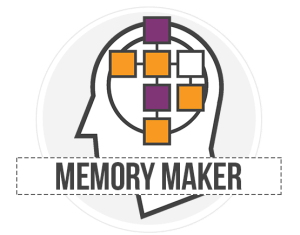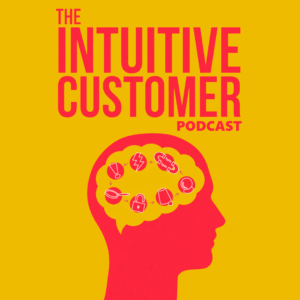Customer emotions have a strong influence on your Customer Experience outcome. From our research in our global Customer Experience consultancy, we know that over 50 percent of experience is about how a customer feels.
Organizations don’t consider customer emotions enough. Moreover, they also fail to recognize the intensity of that emotion. Understanding the significance and managing the power of customers’ emotions is essential to your Customer Experience outcome.
My broadband went out the other night. The first thing I had to do was try to reboot the router. Correction, the first thing I had to do was get a flashlight because I couldn’t see the router because Alexa powers the lights and because the broadband powers Alexa, I couldn’t turn the lights on.
So, the second thing I had to do was reboot the router. It didn’t work.
Next, I had to call in to troubleshoot with a technical representative. While I was waiting, the interactive voice system they used said they could phone me back if I didn’t want to hold. They assured me that I wouldn’t lose my place in the queue. Only, they added, if there is a high call volume, it might be tomorrow before they phoned me back. I didn’t go for this option.
When I finally got through, the person at the other end greeted me with a cheery, “Oh, hello there, how are you?”
I’m angry, that’s how I am!
So, in that example, what was happening? (I mean besides that I was ready to blow my stack from frustration?) The intensity of my emotions and the call center’s cheerful greeting are what is called an Empathy Gap.
Falling Into the Empathy Gap
We discussed Empathy Gaps and how they affect Customer Experience on a recent podcast. An Empathy Gap is when somebody is feeling something different than what we are feeling and fails to put themselves in the other person’s shoes.
It turns out that for humans, it’s challenging for us to put ourselves in their shoes and try to feel what other people feel. It also means that it’s difficult for us to anticipate or understand how other people are reacting.
So, in my example, I felt a strong emotion, anger. Meanwhile, this unlucky phone bank employee, who had only just returned from break where she was chatting with some friends and in a completely different emotional space, was not. I couldn’t even fathom how this person could not be feeling just as intense of a negative emotion as I was, and she probably had a difficulty understanding how I could come so hot into the situation. This fundamental gap in empathy and understanding leads to some serious problems for Customer Experience Management.
Employing people with a high level of Emotional Intelligence (EQ) is essential in customer-facing positions like the call center. Now, I am simplifying a more complicated definition, but EQ is the ability to understand and control emotions of yourself and others.
The reason you should hire people with a high-level EQ for customer-facing positions is people with high EQ reduce the Empathy Gap. The ability to understand how you and the other person are feeling and the ability to control both of them are valuable traits for employees in these areas. Moreover, people with high EQ can anticipate what others are feeling.
Familiarity Breeds…Understanding
Emotional intelligence is one factor that bridges the empathy gap. Familiarity is another. I have an example I use to explain how to know how a person feels. When I walk in the front door, and I shout hello to my wife Lorraine, I can tell you how she is feeling within a one-word response. I know if she is happy or sad. I can even see if I did something wrong.
I also know how to fix it if necessary. If Lorraine is cross with me, I can do A, B, or C, and that will make life better for her. However, if I try X, Y, or Z, that will make it worse.
Part of the reason I am so good at reading the emotional state of my wife is I understand all her cues and signals. When you’re dealing with customers, a lot of times, you’re interacting with people for the first time. So, you can’t rely on familiarity to buffer us in those cases.
What we can is to develop our people’s those skills more explicitly. We can train them to pay attention to all the signals they send us, like the tone of voice, cadence, and body language to identify how that person is feeling. Then, we do things to make them feel happy.
Most organizations do not train on soft skills. I was speaking with a client recently about whether his team had training on these types of things. He said, “well, they know to tell the customer to ‘have a nice day!’” So, no, they don’t train on this type of stuff.
Studies show that people are excellent at identifying emotions from facial expressions. However, it is much harder to gauge intensity. For example, the call center employee at the cable company could tell I was agitated and angry but not be able to rate that on a scale.
The Significance of Memory
In my latest book, The Intuitive Customer, one of the key imperatives is to recognize that customer loyalty is a function of memory. In other words, we don’t choose between experiences; we choose between the memory of those experiences.
We also know that customers form memories using the Peak-End Rule. The Peak-End Rule states that what people remember about an experience is the highest emotion and how they feel at the end. Therefore, when customers have a high degree of emotional intensity, that’s what they remember.
In the soft skills training we do for front line employees, Memory-Maker Training, we link these things together. Memory Maker Training teaches employees how to use the Peak -End Rule to help customers form positive memories about their experience. Part of this training is also to ascertain how a customer feels coming into the experience.
We base our Memory-Maker soft skills training on the following four ideas/steps:
- Determine how the customer feels walking into the experience
- Define how we want them to feel walking out of the experience
- Identify the things we can do to make them feel that way
- Communicate to employees the specific words and actions that will encourage the customer to feel the way we want them to
However, even with this training, picking up on intensity can still be difficult in these situations. It is challenging because we know that yelling at the top of our lungs at the broadband provider is not okay.
In a professional social interaction, we do not always feel free to express our emotions the way we would in other situations. Therefore, it can be harder to pick up on intensity when we interact in them, which only widens the Empathy Gap. With the deck stacked against you, you must train your employees on these skills to increase their accuracy and make their jobs easier.
Also, people have a natural ability in these areas. It’s the classic bell curve where you’ve got around fifteen percent of people who are your high-flyers. It is intuitive for them to read how customers feel. Then, there is 15 percent of people that are terrible at reading emotions. They shouldn’t be in a job that requires these skills. That leaves the majority, 70 percent, in the middle somewhere that needs their potential released.
The danger is that a lot of the “peak” emotions that customers feel and remember are negative emotions. Therefore, it is vital not to frustrate customers by pushing them through processes you developed for efficiency’s sake. The intensity of feeling is essential for the customers’ memory of the interaction with you.
The Curse of Knowledge
So what do you do about all this? When you recognize the gap, know it is a specific type of cognitive bias, but one of a family of prejudices that have been researched that all point in the same general direction: the Curse of Knowledge.
The idea behind the Curse of Knowledge is that it is hard to unknow things that we know, which makes it difficult for us to empathize with people who don’t know what we know. So, if we’re managing a brand or working for a company, we know a lot of things about our offering that our customers don’t. It can be hard for us to remember that when working with them.
Also, Egocentric Bias plays a role here, too. The Egocentric Bias is the assumption that other people are feeling what we feel and have the same perspective we do. They don’t always.
Finally, the Empathy Gap is at work. It’s hard for us to feel what other people feel and to identify the intensity of those emotions.
So, what are your specific plans to overcome that? How are you going to be better at this? And, recognizing that these problems are only human, how are you going to get your employees to be better at it?
Since the Empathy Gap varies based on individual ability, we recommend letting the top 15 percent do what they do. We also suggest reassigning the bottom 15 percent. Then, focus on the middle group with advanced soft-skills training.
Training is key. It releases your people’s potential to understand how the customer is feeling, walking into the experience, and converting them into how you want them to feel walking out of the experience. Training will help your employees get better at recognizing what’s going on emotionally with customers and how much of it is going on at any given time.
We know that a strong influence on your Customer Experience outcome is how customers feel about it. More than half of any experience is affected by the customers’ emotions during it. Don’t be one of the companies that don’t notice or care about customer emotions and how strong they are. Bridge the Empathy Gap by understanding and managing the intensity of customers’ emotions, and you can improve your Customer Experience outcome.
To hear more about Why the Strength of Customer’s Emotion is Critical in more detail, listen to the complete podcast here.
 Customer loyalty is a function of customers’ memories. Customer Service excellence is an integral part of how people remember things, but too few organizations take the time to train their customer-facing employees to deliver it. Our Memory-Maker Training fills this gap with instruction in the soft-skills needed to produce a higher level of satisfaction that influences better experience memories as part of an overall Customer Experience strategy. Click here to learn more.
Customer loyalty is a function of customers’ memories. Customer Service excellence is an integral part of how people remember things, but too few organizations take the time to train their customer-facing employees to deliver it. Our Memory-Maker Training fills this gap with instruction in the soft-skills needed to produce a higher level of satisfaction that influences better experience memories as part of an overall Customer Experience strategy. Click here to learn more.
 Hear the rest of the conversation on Why the Strength of a Customer’s Emotion is Critical on The Intuitive Customer Podcast. These informative podcasts are designed to expand on the psychological ideas behind understanding customer behavior. To listen in, please click here.
Hear the rest of the conversation on Why the Strength of a Customer’s Emotion is Critical on The Intuitive Customer Podcast. These informative podcasts are designed to expand on the psychological ideas behind understanding customer behavior. To listen in, please click here.
Colin Shaw is the founder and CEO of Beyond Philosophy, one of the world’s leading Customer experience consultancy & training organizations. Colin is an international author of six bestselling books and an engaging keynote speaker.
Follow Colin Shaw on Twitter @ColinShaw_CX


